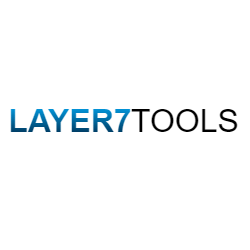Artificial Intelligence (AI) writing tools are gaining in popularity day by day. With many writing applications, from bots to digital assistants, this technology is helping to improve user experience in numerous ways.
AI is able to understand natural language and provide responses accordingly. AI-powered writing tools can help with more than just analysis and formatting. They can also help users write and edit content quickly and correctly. For example, writing tools that use AI can help find grammar mistakes, suggest better word choices or sentence structures, and rewrite a sentence to make it easier to read.
The goal of this article is to provide an overview of NLP, NLG, and ML, which are the three main technologies used in AI writing, as well as a list of common AI tools that use these technologies.
In short, NLP is a branch of AI that deals with the understanding and manipulation of natural language. NLG is a subfield of NLP that deals with the generation of natural language. ML is a field of AI that deals with the study and design of algorithms that can learn from and make predictions on data. Common AI writing tools that use these technologies include generative ai writing tools, grammar checkers, spell checkers, style checkers, predictive text editors, etc.
Natural Language Generation (NLG)
Natural Language Generation (NLG) is the process of using artificial intelligence to turn structured data into texts that sound like a person wrote them. This type of AI writing technology can help you create text from structured data sources like databases, spreadsheets, and other structured data sources. NLG tools can save you time and effort by automatically generating content from structured data, enabling you to focus on higher-level tasks. Also, NLG can make writing faster and better by making it easier to be accurate, consistent, and thorough. Let’s dive into how natural language generation (NLG) works.
What is NLG?
Natural Language Generation (NLG) is a subfield of Artificial Intelligence (AI) that deals with the task of writing or speaking language automatically in the right style and context. Computer systems often use it as a way to present users with meaningful and coherent information based on input data.
NLG technology has grown rapidly in recent years, and there are now many available AI writing tools with varying capabilities. Some can generate text from scratch, and others require a predetermined set of rules to use as guidance. Additionally, different Text-to-Speech (TTS) services have been developed to process generated language into various audio forms.
At its core, NLG is the practice of using natural language processing techniques to generate text from structured data. This can include everything from simple rule-based tricks for producing short emails or scripts for chatbots to complex programs that write articles and reports on a variety of topics based on user input.
For AI systems to make NLG outputs that are accurate and trustworthy, they need to have large datasets and very complex algorithms that allow them to understand the purpose, context, and nature of the questions being asked. As more intelligent AI models become available, NLG will be adopted more widely across industries such as finance, journalism, healthcare, education, law enforcement, and entertainment – allowing for faster response times for large volumes of requests while saving human resources otherwise wasted performing repetitive tasks.
Examples of NLG
Natural Language Generation (NLG) is a form of Artificial Intelligence (AI) technology for automatically producing written text from data. By leveraging Knowledge Representation and Natural Language Understanding, NLG systems are able to transform structured data into human-readable and engaging content.
There are two primary ways to use NLG technology: automated template-based natural language generation and a machine learning approach.
Template-Based NLG involves manually creating templates while leveraging structured data as the source. The template system allows users to insert data variables into the pre-defined structure, allowing you to quickly create personalized content that fulfills specific criteria, like recommendations or summaries. You can custom templates in tools like Rytr.
On the other hand, the Machine Learning approach is based on training an algorithm by providing it with an extensive library of examples written by writers or journalists and instructions on how to write in a certain way or style. With years of training, the system can generate sentences that are stylistically similar to those used in professional documents or news reports.
Examples of NLG used in everyday life include customer service chatbots that respond with relevant information; automated email marketing tools for personalized dynamic offers; customer support bots for customer self-help; summarization software that automatically condenses long texts into meaningful snippets; travel recommendation pages that aggregate information from multiple sources based on user preferences; and automated financial advisors that produce detailed analyses from different datasets as well as customized insights.
Some of the most popular NLG-based AI writing tools available are Microsoft’s Autopilot, Automated Insights’ Wordsmith, Quill by Narrative Science, OpenAI’s GPT-3, and BotDoc’s BotWrite.
Natural Language Processing (NLP)
Natural language processing, or NLP, is a type of artificial intelligence (AI) used to process and analyze language. It is currently being deployed in a variety of applications, such as summarization, text classification, text completion, dialogue systems, and more. NLP-enabled tools can help you create content more quickly and accurately, automate writing tasks, and help you stay on top of changes in the industry. Let’s take a look at the different types of NLP tools available today.
What is NLP?
Natural Language Processing (NLP) is a type of Artificial Intelligence (AI) that is used to analyze, understand and generate human language. It involves using algorithms to analyze text and recognize patterns, as well as generating new text from the data. For example, NLP can be used to automatically identify the topics within a set of documents or cluster similar items together. It can also be used to automatically generate documents based on data such as customer feedback or company records.
NLP has applications in many areas, including content generation, dialog systems, machine translation, question answering, and summarization. In recent years it has gained traction as a tool for assisting humans in writing, particularly for natural language generation tasks such as generating personalized emails or summarizing data from multiple sources into one coherent report.
To help understand Natural Language Processing further, it is useful to look at some examples of commonly used AI writing tools powered by NLP. Natural Language Generation tools allow authors to create texts from structured data quickly and accurately by automatically selecting words and phrases that have the highest relevance for each sentence written; these applications are perfect for content creation purposes such as automatic blog posts or article summaries. Additionally, automated content curation tools use NLP-based algorithms to select articles with specific keywords or phrases in order to create more personalized user experiences; this enables users who request content such as “Technology News” or “Sports Updates” via chatbots to receive targeted results tailored based on the keyword requested. Natural Language Understanding technologies enable semantic understanding of what has been written by breaking down the text into its component parts: identifying entities and emotion detection are two types that are popular right now due to their potential in marketing insights analysis. Finally, Automated Sentiment Analysis empowers users with analytics regarding people’s attitudes toward specific subjects; this type of NLP technology enables brands and companies to track customer opinion about their products/services via Twitter updates or surveys/polls, etc..
Examples of NLP
Natural language processing (NLP) is an area of artificial intelligence (AI) that enables computers to understand, interpret, and manipulate human language. NLP is the key element of many AI applications, including speech recognition systems, automated customer service agents, and machine translation services.
There are a variety of techniques used for natural language processing, but the two most common types are rule-based and statistical approaches.
Rule-based methods involve manually programming each individual sentence with grammar rules and syntactical patterns that enable the machine to interpret a sentence correctly. This approach can be labor-intensive, as it requires experts to write rules for each language variant individually.
Statistical methods rely on large bodies of data with specific meanings or contexts associated with them in order to teach machines the mechanics of a language and its grammatical structure using algorithms. For example, neural networks can analyze a large amount of text by creating vector representations of words and then finding relationships between these vectors within sentences.
Examples of NLP include:
- Sentiment analysis – understanding whether a piece of text has positive or negative sentiment;
- Keyword extraction – isolating topical words or phrases from given documents using statistical analysis;
- Text classification – categorizing pieces of content such as emails, articles, and reviews;
- Machine translation – translating content from one language into another without any manual intervention;
- Named entity recognition – recognizing important entities such as people, locations, and organizations within a given text;
- Automatic summarization – condensing long pieces into shorter versions by identifying key ideas for example, GoCharlie has inbuilt summarization of up to 4000 characters;
- Speech recognition – converting spoken audio into a written form using deep learning models.
- Examples of NLP-based AI writing tools include Grammarly, ProWritingAid, Gavagai Explorer, Hemingway Editor, Quillbot, Writefull, and Linguix. These tools can help to improve the clarity and accuracy of writing, suggest grammar and style changes, and provide analysis of readability. They can even provide synonyms and other suggestions to help improve the quality of the writing.
Machine Learning (ML)
Machine Learning (ML) is an application of Artificial Intelligence that allows machines to learn from data and previous experiences. ML can be used to build AI models that identify patterns, make predictions, and respond to user input. It is a powerful tool for automating tasks, such as writing content for websites, because it can process large amounts of data and learn from it. With ML, machines can generate new content and even revise existing content for accuracy and relevance.
What is ML?
Machine learning (ML) is a form of artificial intelligence that allows computer systems to autonomously ‘learn’ from large-scale datasets and recognize patterns to make predictions or decisions. ML uses algorithms that allow machines to learn from data inputs, analyze those inputs, and identify patterns in order to make decisions or provide outputs based on what the machine has learned over time.
This can be used to power AI writing tools which are able to generate automated text by leveraging natural language processing (NLP), a subset of ML that focuses on analyzing human language. Such AI tools can analyze large amounts of text from different sources – books, articles, blog posts, etc. – and use them to teach an algorithm how language is constructed for a particular context, allowing it to generate similar output tailored for a specific audience.
ML can facilitate faster training for such algorithms with massive datasets and enable greater accuracy too – which means AI-powered writing tools have the potential to produce effective content faster than ever before..
Examples of ML
In the Machine Learning (ML) writing context, there are different types of ML tools available. ML is a subset of Artificial Intelligence (AI). It is a powerful set of technologies that create smart applications to enable machines to learn, generate insight and recommend actions without explicit programming. This can now be used to ensure comfortable, accurate, and natural writing abilities with AI writing platforms.
The types of ML technologies that fall into this category are as follows:
- Natural Language Processing (NLP): NLP enables machines to analyze textual data from various sources such as emails, documents even voice commands, and it then helps computers generate meaning from that data by interpreting sentences in context.
- Generative Writing: Generative writing refers to the process by which an AI can examine a given piece of text from an author or reader and suggest changes or augmentations.
- Deep Learning: Deep learning combines NLP algorithms with large datasets in order to determine useful patterns in text data and make recommendations for improving the text for future use.
- Neural Networks: Neural networks use algorithms that simulate the way the human brain works by analyzing complex data sets in order to recognize patterns in language so that they can offer better recommendations for writing tasks.
- Some examples of AI writing tools that use Machine Learning include Grammarly, GPT-3, Auto Writer, and other Generative AI writing tools like Contentbot, GoCharlie, Copyai, etc.
Conclusion
In conclusion, AI writing tools are a useful addition to your digital toolkit because they can be used in many different ways. Depending on your needs and preferences, you can find the type of digital tool that works best for you. Whether you want to generate content quickly or refine existing content, there is an AI writing tool that can help make your work smoother and more efficient.
For instance, Natural Language Processing (NLP) tools can understand how words express meaning and provide better insights into your written data. This type of AI writing tool can help eliminate the need for manual review by providing powerful data processing capabilities. Similarly, Artificial Intelligence-powered Content Generators can generate news articles and other content from scratch with natural-sounding words. These tools are good for researchers who need lots of material for their studies but don’t have enough time to produce it themselves. Finally, Speech Recognition tools provide a new approach to text input which is great for people who might not have access to a keyboard or mouse (or just don’t like typing!). With all these different types of AI writing tools available, it’s up to you to decide what best fits your workflow and use cases!
- WPVivid Backup Plugin Review (2023): Backup, Restore, Stage, and Migrate WordPress Sites - March 1, 2023
- How to Write Better Outlines with ChatGPT (Including Prompts) - February 3, 2023
- How to Write good headlines that grab attention and drive conversions - January 27, 2023



